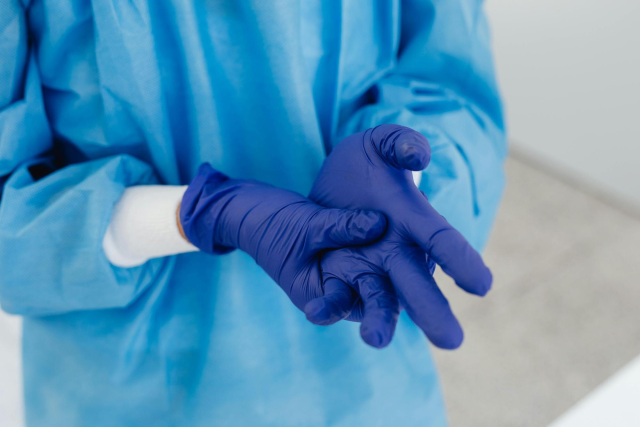
Hospitals have continuously worked on implementing new measures to minimize risks and deliver improved outcomes. Advances in technology, structured reporting systems, and safety protocols are becoming more innovative and data-driven. Here are five hospital safety practices that transform patient care, increase efficiency, and obtain better health outcomes.
Near Miss & Good Catch Programs
One of the significant ways that hospitals can prevent serious errors is to identify and analyze near misses (an incident that could have caused harm but usually doesn't). Such occurrences provide essential learning opportunities to aid improvement in hospitals' procedures and prevent repeating such mistakes.
The Good Catch Program allows medical workers to report risks, making room for open communication and increasing improvement. Creating an environment where staff is incentivized and polite about reporting slip-ups helps stop an incident long before an injury occurs. Studies have confirmed that hospitals with effective patient safety measures significantly reduce the preventable errors dramatically while increasing the staff vigilance and awareness of safety issues.
Successful Good Catch Programs usually have an educational element, for example, an overview of all reported incidents at staff meetings and a discussion on possible improvements.
This enhances awareness among staff and builds better teamwork and accountability. Supporting a no-punishment reporting culture assures that the staff will want to speak up about concerns, improving patient safety.
AI-Powered Patient Monitoring
Artificial intelligence (AI) revolutionizes patient monitoring with real-time data analysis and predictive insights. AI-powered monitoring systems apply machine-learning algorithms to analyze patient vitals, detecting patterns allowing early alerts to healthcare providers about potential risks of clinical deterioration before reaching a critical status.
For example, AI-enabled monitoring can detect sepsis early, a life-threatening rapid clinical deterioration. Rapid awareness allows medical teams to intervene much sooner, leading to better patient outcomes and reduced mortality. AI can also allow remote monitoring of patients, providing proper care to individuals in rural or underserved areas lacking immediate access to specialized medical staff.
Moreover, AI is being leveraged for chronic care. AI algorithms can trace vital signs trends over time, providing deep insights for doctors on conditions associated with heart disease or respiratory issues. Hospitals adopting AI technology have reported decreased ICU admissions and enhanced long-term care of at-risk patients.
Barcode Medication Administration
Medication errors are a significant risk to patient safety, threatening more serious concerns with adverse drug reactions and leading to deaths. Barcode Medication Administration (BCMA) seems to have become a big saver in reducing such mistakes by ensuring the proper medication is provided to the right patient at the right time.
BCMA uses handheld devices that read the barcodes on patient wristbands and medication packages and then authenticate this data with electronic health records to confirm dosing and timing and to check for drug interactions. Hospitals that adopted BCMA technology reported a substantial decrease in medication errors, adherence to prescribed treatment plans, and improved patient safety.
Additionally, BCMA could link with automated dispensing cabinets (ADCs), permitting pharmacists and nurses to review and ascertain that authorized personnel may access the medications. Some hospitals have integrated BCMA with real-time analytic dashboards, providing administrators with detailed reports on medication compliance and risk areas.
Standardized Hand Hygiene Compliance Tracking
Hospital-acquired infections (HAIs) can be effectively prevented through standardized infection control measures. However, ensuring compliance among healthcare workers is a challenge. Traditional hand hygiene monitoring has been based on direct observation, which is limited and highly subjective.
In this regard, many hospitals now utilize electronic monitoring systems for real-time monitoring of hand hygiene compliance. The systems involve sensors to detect when healthcare workers enter and exit patient rooms, sending flashes to remind caregivers to sanitize their hands. Some hospitals have also used an AI-driven track for compliance spots needing urgent improvements. This technology-assisted play has reduced hospital HAIs, improving patient security and care quality.
In addition to technological solutions, many hospitals now organize workshops on hand hygiene training and invoke gamification strategies to promote compliance. Monthly competitions between departments, awarding the best-performing unit recognition, have proved to be a good motivating factor.
Staff Training Using Virtual Reality
In-service education or continuous training for hospital staff remains essential in responding to emergencies that could lead to medical errors. VR (virtual reality) simulation is revolutionizing how healthcare professionals are trained, allowing them to practice high-risk scenarios in the most controlled immersive environment possible.
VR training benefits surgical teams, emergency responders, and those working in the intensive care unit (ICU). It enables skill improvement without the risks accompanying actual human patient care. In simulated environments, hospital staff practice complex medical procedures and emergency responses, building self-esteem, improving decision-making abilities, and correcting deficiencies, thus showing a marked enhancement toward better patient outcomes.
Some hospitals also utilize augmented reality (AR), enabling assistance during procedures that involve real-time data. AR takes digital information and overlays it onto the real-world environment of a procedure so that surgeons can visualize complex anatomy during surgery. This leads to a greater degree of accuracy and lower rates of complication.
Endnote
Hospitals are continually working to advance their performance in providing better safety due to the introduction of specific approaches, technology monitoring programs, and formal training courses. Whether near-miss reporting, AI monitoring, or smart wearables, these innovations modify the face of patient care and raise new levels of healthcare excellence. With hospitals becoming increasingly committed to safety in their patient care, the future of patient care will only become safer, smarter, and more patient-centered.






